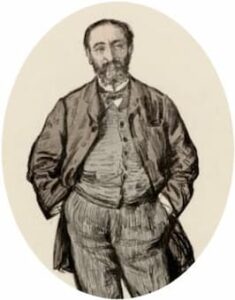Abigail Adriano as Kim CONTRIBUTED PHOTOS/DANIEL BOUD ,Seann Miley Moore as the Engineer
Full casting has been announced today for The company is led by Filipino-Australians Abigail Adriano and Seann Miley Moore lead the cast of the upcoming the international tour of Cameron Mackintosh's new production of Boublil and Schönberg's "Miss Saigon," which will begin in Manila before traveling to other Asian territories.
Adriano plays Kim while Miley Moore as the Engineer. The 19-year-old Adriano made waves during the Australian run of the production and now joins the ranks of talented Filipinas like Lea Salonga, Monique Wilson, Joanna Ampil, Carla Guevara-Laforteza, and Eva Noblezada who have played the iconic role of Kim on Broadway and West End.
Leading the cast alongside Adriano and Miley Moore is Nigel Huckle as Chris, Sarah Morrison as Ellen, Lewis Francis as John, and Laurence Mossman as Thuy.
Local Filipina performer Kiara Dario also joins the company as Gigi. Dario was recently the lead in Repertory Philippines' "Snow White and the Prince," wherein she was nominated as Best Performer in a Musical for the BroadwayWorld Philippines Awards. Miss Saigon marks her first international tour.
Sharing his excitement for this cast, Cameron Mackintosh said, "This is a cast with incredible energy and heart who totally get the true story of Miss Saigon and its contemporary resonance. I have no doubt it'll be one of the most unforgettable productions of Miss Saigon we have ever seen."
GMG Productions' CEO Carlos Candal also commented, "We're incredibly excited to bring Miss Saigon to Manila and showcase the incredible talents of this diverse and remarkable ensemble. Filipinos will undoubtedly be treated to the exceptional artistry and performances this company of world-class performers can deliver."
"This show is Asian excellence and this cast is giving Slay-Asian pride!" Miley Moore said.
"Miss Saigon is a story that resonates with so many of us and our families so seeing all of us together, ready to tell this story, is really empowering. The spotlight is now on our community, and we are going to own the stage and tell our truth." Miley Moore has garnered rave reviews for their portrayal of the challenging role of the Engineer.
The Miss Saigon company of 42 performers is completed by Michael Boyle, Carlo Boumouglbay, Ellie Chan, Shannon Cheong, Celine Cleveland, David Duketis, Natasha Dumlao, Gelina Enriquez, Sara Haruta, Leyton Holmes, Jiho Hwang, Emily Huynh, Mikaila Imaguchi, Patrick Jeremy, Hamish Johnston, Nicholas Kong, Vi Lam, Winchester Lopez, Robbie Mejica, Bailey Nathan-Park, Tetsuya Okubo, Atsushi Okumura, David Ouch, Tony Oxybel, Paloma Renouf, Annabelle Rosewarne, Jack Connor Rowan, Trevor Santos, Louis Stockil, Asmara Soekotjo, Tamsyn Thomas, Brad Veitch, Aday Velasco, Louisa Vilinne, and Sam Ward.
Miss Saigon has music by Claude-Michel Schönberg with lyrics by Richard Maltby Jr. and Alain Boublil, adapted from original French lyrics by Alain Boublil, with additional lyrics by MichaelMahler.
The new production is directed by Laurence Connor with musical staging by Bob Avian and additional choreography by Geoffrey Garratt.
Don't miss the opportunity to witness Miss Saigon, landing at The Theatre at Solaire from March 23 to May 5. For updates, visit www.gmg-productions.com.

.webp)





